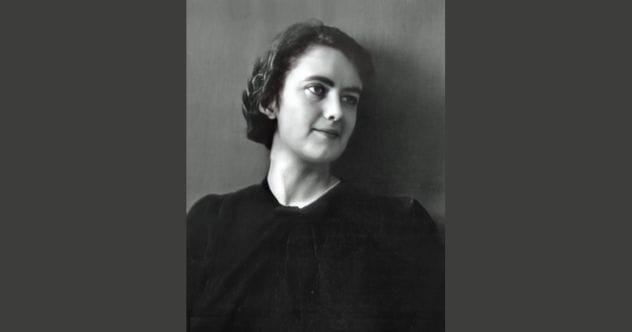J. Robert Oppenheimer, famously known as the “Father of the Atomic Bomb,” was a towering and enigmatic figure of the 20th century. While his pivotal role in the Manhattan Project during World War II is widely recognized, many intriguing aspects of his life remain lesser-known. These hidden facets reveal a complex individual with diverse interests, profound contradictions, and unexpected influences.
Let’s dive into ten lesser-known facts about Robert Oppenheimer, offering a fresh perspective on his extraordinary life. These insights uncover the layers of the man behind the atomic bomb, exploring everything from his passion for Eastern philosophy to his turbulent political entanglements and compelling personal stories.
The Multilingual Mastery of Oppenheimer
Robert Oppenheimer’s linguistic talent is truly remarkable. Beyond his scientific achievements, he possessed a deep love for languages and classical studies. His education emphasized both science and the humanities, nurturing a broad range of interests spanning Greek, Latin, French, and German.
What’s particularly impressive is Oppenheimer’s ability to rapidly learn new languages. He reportedly mastered Dutch in just six weeks to deliver a technical presentation in the Netherlands. This feat highlights his intellectual prowess and his commitment to knowledge and understanding.
His linguistic adaptability reflected his passion for authenticity, as he always preferred to access information in its original language. This love for languages extended to a lifelong fascination with the classics and Eastern philosophy, enriching his character far beyond his contributions to the Manhattan Project. [1]
The Disturbing Tale of Oppenheimer’s Poisoned Apple

While celebrated as the father of the atomic bomb, a dark episode from Oppenheimer’s past reveals a chilling aspect of his character. It’s a real-life narrative reminiscent of a Dostoevsky story.
In 1926, while vacationing in Corsica with fellow students from Cambridge University, Oppenheimer confessed a disturbing secret: he had attempted to murder his tutor back in Cambridge. His method? An apple injected with poisonous chemicals, left on the tutor’s desk. His friends were shocked, struggling to reconcile this with the jovial vacation atmosphere.
This incident offered a glimpse into Oppenheimer’s inner turmoil, a trait he admired in Dostoevsky’s works. It exposed a darker side to his intellect, highlighting a complexity that went beyond his academic achievements. His friends expected intellectual exploration, but they discovered a sinister undercurrent to Oppenheimer’s brilliance. [2]
Oppenheimer: The Quantum Physics Enthusiast
J. Robert Oppenheimer’s early passion for quantum physics is another fascinating detail. Quantum physics, which explores the world at the smallest scales, captivated Oppenheimer early in his academic career. He graduated summa cum laude from Harvard in 1925, demonstrating remarkable intellectual capacity.
Seeking deeper research opportunities, Oppenheimer went to the University of Göttingen in Germany, a leading research institution. There, he studied with prominent figures like Max Born and Niels Bohr.
In 1927, this phase culminated with Oppenheimer and Born developing the Born-Oppenheimer Approximation, an influential model in molecular quantum mechanics. This work highlighted his dedication to quantum physics, showcasing his inquisitive nature, intellect, and capacity for collaboration—qualities crucial to his leadership of the Manhattan Project. [3]
Communist Connections: Oppenheimer’s Political Ties
His complex relationship with communist movements during the Cold War is a significant aspect of J. Robert Oppenheimer’s life. Despite leading the Manhattan Project, his early associations with the American Communist Party were well-known. During his time at the University of California, Berkeley, his social circle included members of the American Communist Party and communist sympathizers.
Oppenheimer humorously noted on a Manhattan Project security questionnaire that he “probably belonged to every Communist-front organization on the West Coast.” Despite these ties, his importance to the Manhattan Project led General Leslie R. Groves to dismiss security concerns and insist on his clearance.
However, these communist affiliations later contributed to the revocation of his security clearance in 1954, marking a dramatic and controversial turning point in his career. [4]
The Significance of the Enrico Fermi Presidential Award
The Enrico Fermi Presidential Award holds considerable importance. Established in 1956 to honor Enrico Fermi, a physicist crucial to developing atomic energy, the award recognizes exceptional achievements in science, technology, engineering, and policy related to the U.S. Department of Energy’s mission.
This Presidential award includes a citation signed by the President and the Secretary of Energy, a gold-plated medal with Fermi’s likeness, and a $100,000 honorarium.
Recipients include luminaries like John von Neumann, Ernest O. Lawrence, and J. Robert Oppenheimer himself, highlighting the award’s prestige. It motivates excellence in energy science and technology research and serves as inspiration for those seeking to make significant contributions in these fields. [5]
Mixing Physics and Martinis: Oppenheimer’s Unique Recipe

Beyond his scientific contributions, J. Robert Oppenheimer was known for his distinctive martini recipe. As the head of the Manhattan Project, he often hosted parties in Los Alamos, featuring his unique martinis: four ounces of gin with a splash of vermouth. The glass rim was dipped in a mix of honey and lime juice.
Pat Sherr, a physicist’s wife, described Oppenheimer’s martinis as “the most delicious and coldest” she’d ever tasted. This reveals a lesser-known side of Oppenheimer: his flair for hosting and mixology.
This humanizes the famed physicist and adds a touch of whimsy to his image. Through these gatherings, Oppenheimer extended his influence beyond atomic physics, intertwining scientific and social spheres while wielding a cocktail shaker. [6]
New Mexico: The State That Stole Oppenheimer’s Heart
Robert Oppenheimer’s deep love for New Mexico began during his recovery from dysentery in 1922. His father suggested he experience the outdoors in New Mexico, where he spent time horseback riding through the Sangre de Christo and Jemez Mountain Ranges. This region captivated him, and he visited the Los Alamos Ranch School, which would later become the hub of the Manhattan Project at his suggestion.
Oppenheimer’s bond with New Mexico grew stronger. Even as his physics career flourished, he often returned. In the summer of 1928, he and his brother Frank went on horse-packing trips and he rented a cabin on 154 acres in the Sangre de Cristo Mountains, purchasing it in 1947.
The cabin, nicknamed “Perro Caliente” or “Hot Dog,” symbolized Oppenheimer’s lasting connection to New Mexico. His affinity for the state underscores the influence of place on personal identity and its pivotal role in shaping global history. [7]
Jean Tatlock: An Influential Figure in Oppenheimer’s Life

The tragic story of Jean Tatlock, an American physician, psychiatrist, and communist sympathizer, is another intriguing facet of Oppenheimer’s life. Tatlock is renowned for her relationship with J. Robert Oppenheimer.
In the mid-1930s, Tatlock met Oppenheimer, then a professor at the University of California, Berkeley. Their relationship evolved into an intellectual and emotional bond. Despite declining his marriage proposals, Tatlock significantly influenced Oppenheimer, drawing him into her communist sympathies.
This connection later had serious implications when Oppenheimer was being considered to lead the Manhattan Project. The FBI opened a file on him, focusing on his communist associations, including his relationship with Tatlock. Their activities, including a 1943 meeting, were monitored by intelligence agents, adding intrigue to this chapter of history. [8]
Oppenheimer’s Hidden Battle: Mental Health Struggles
Oppenheimer grappled with his mental health alongside his intellectual pursuits. Known for his intelligence, he achieved scientific milestones but battled deep-seated mental health issues. This struggle was intense during his time at Cambridge’s Cavendish Laboratory, where routine lab work stifled his passion for theoretical physics, leading to emotional distress.
Oppenheimer’s challenges persisted after Cambridge. His role in the Manhattan Project and the atomic bomb’s creation compounded his psychological distress. The bombings of Hiroshima and Nagasaki led to guilt and regret.
This period highlights the immense pressure and moral dilemma he faced, causing him to resign from Los Alamos and withdraw from public life. His experience reminds us that even brilliant minds can struggle with mental health, underscoring the importance of support and understanding. [9]
Posthumous Justice: Reinstating Oppenheimer’s Clearance
A significant event in J. Robert Oppenheimer’s posthumous narrative is the restoration of his security clearance in late 2022 by U.S. Secretary of Energy Jennifer Granholm. This overturned the 1954 decision by the U.S. Atomic Energy Commission, which had revoked Oppenheimer’s clearance due to alleged communist ties. This action severely impacted his life and career.
The rescindment offers retroactive justice, acknowledging the unfair personal and political attacks Oppenheimer endured. It reaffirms his contributions to science, including his leadership of the Manhattan Project where he developed the atomic bomb in 27 months.
While it cannot undo past challenges, the reinstatement is a significant gesture to right historical wrongs and restore his legacy in American science and history. [10]
In summary, J. Robert Oppenheimer’s life was filled with complexities and contradictions that extend far beyond his role in the Manhattan Project. From his remarkable linguistic abilities and passion for quantum physics to his political entanglements, personal struggles, and the posthumous reinstatement of his security clearance, Oppenheimer’s story continues to fascinate and provoke reflection.
What do you think about these lesser-known facts? Leave your comment below!










